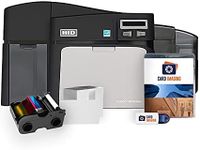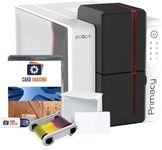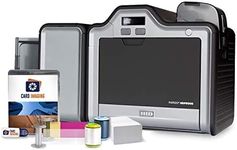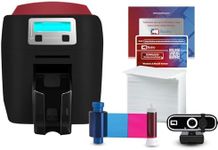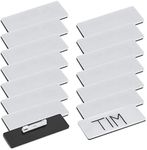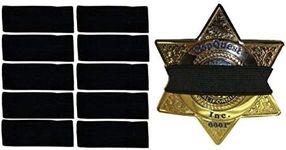Buying Guide for the Best Card Printers
Choosing the right card printer can be a bit overwhelming, but with the right approach, you can find a model that perfectly fits your needs. Card printers are used for printing ID cards, membership cards, loyalty cards, and more. To make an informed decision, you need to consider several key specifications that will determine the printer's suitability for your specific requirements. Understanding these specs will help you navigate through the options and select the best card printer for your needs.Print TechnologyPrint technology refers to the method the printer uses to transfer images and text onto the card. The two main types are direct-to-card (DTC) and retransfer (reverse transfer). DTC printers are generally more affordable and suitable for standard card printing needs, while retransfer printers offer higher print quality and edge-to-edge printing, making them ideal for high-quality or complex card designs. Choose DTC for basic needs and retransfer for premium quality.
Print ResolutionPrint resolution is measured in dots per inch (DPI) and determines the clarity and detail of the printed image. Higher DPI values result in sharper and more detailed prints. Common resolutions are 300 DPI and 600 DPI. For most standard ID cards, 300 DPI is sufficient. However, if you need high-definition images or intricate designs, a 600 DPI printer would be more appropriate.
Print SpeedPrint speed indicates how quickly the printer can produce a card, usually measured in cards per hour (CPH). Faster print speeds are beneficial for high-volume printing environments. If you need to print a large number of cards quickly, look for a printer with a higher CPH. For smaller batches or occasional printing, a slower speed may be acceptable and more cost-effective.
Card Types and SizesCard printers can handle various types and sizes of cards, including PVC, composite, and magnetic stripe cards. It's important to ensure that the printer you choose is compatible with the type of cards you plan to use. Standard card size is CR80 (credit card size), but some printers can handle larger or smaller sizes. Consider your specific card requirements when selecting a printer.
Connectivity OptionsConnectivity options determine how the printer connects to your computer or network. Common options include USB, Ethernet, and Wi-Fi. USB is suitable for direct connections to a single computer, while Ethernet and Wi-Fi are ideal for networked environments where multiple users need access to the printer. Choose the connectivity option that best fits your setup and workflow.
Lamination and EncodingLamination adds a protective layer to the card, enhancing durability and security. Encoding options, such as magnetic stripe, smart card, and RFID encoding, allow you to add functionality to the cards, like access control or data storage. If your cards need to be durable or have additional features, look for a printer with lamination and encoding capabilities. For basic ID cards, these features may not be necessary.
Software CompatibilitySoftware compatibility refers to the printer's ability to work with various card design and printing software. Ensure that the printer is compatible with the software you plan to use, whether it's a proprietary program or a third-party application. Compatibility with popular software can make the design and printing process more seamless and efficient.

